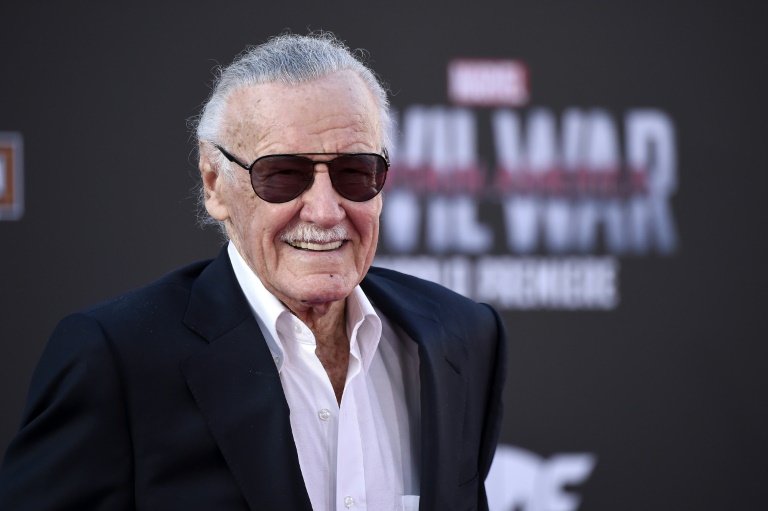American cartoonist Joe Sacco has more or less invented a new category of reporting: graphic journalism–“graphic” in both senses of the word, as the stories he chooses to cover, in comic-strip form, are always from war-torn parts of the world.
Sacco is famous for his award-winning graphic novel Palestine (Fantagraphics, 1996) and for Safe Area Gorazde (Fantagraphics, 2000), about the Bosnian war. His latest work, Footnotes in Gaza, is based on a trip he made to the Palestinian enclave in 2003 to research a near-forgotten episode in Palestinian history: the massacres of civilians committed by Israeli troops in Rafah and Khan Younis during the tripartite aggression of 1956.
Sacco sets the scene by chronicling how, after the creation of Israel in 1948, 200,000 Palestinian refugees ended up in the Gaza Strip, at the time under Egyptian control. By the 1950s, the temporary refugee camps established for them by the UNRWA had turned into vast, semi-permanent shantytowns. Many Palestinians continued to cross the border into Israel, however, to visit their relatives and–in some cases–to carry out raids. Skirmishes often erupted between Palestinians and Egyptian soldiers on one side, and Israeli soldiers and settlers on the other. By 1956, some 300 Israelis and between 2,700 and 5,000 Palestinians had been killed in the sporadic fighting. Egyptian President Gamal Abdel Nasser formed Palestinian guerrilla groups under Egyptian command, but held back from engaging in an all-out war with Israel.
In 1956, Israel, France and Great Britain colluded to launch the now-infamous tripartite aggression, an attack on Egypt intended to wrest control of the newly nationalized Suez Canal back from Naser’s government. Israeli forces invaded the Gaza Strip. In the town of Khan Younis, they went house-to-house looking for young men–the fedayeen that the Israeli military was determined to extirpate. In many cases, it appears that the Israelis considered all young Palestinian men as belonging to this category. They killed 275 of them in Khan Younis, according to one United Nations report. The Israelis alleged that those killed had offered armed resistance; the Palestinians that Sacco interviews tell story after heart-wrenching story of unarmed men being shot in their homes–often in front of their relatives–or lined up and executed en masse.
One of the most effective visual techniques employed by Sacco is the use of panels depicting certain key locations as remembered by elderly interviewees juxtaposed with how they look today. The contrasts give the reader a sense of the hidden layers of history; of the deep and traumatizing memories just beneath an otherwise mundane surface.
Footnotes in Gaza takes place in both the past and the present. Sacco interweaves the 1956 episode with an account of modern-day Gaza: black night-time streets–silenced by curfew–occasionally illuminated by Israeli flares and tracer fire, traffic snarled at ubiquitous Israeli checkpoints, families rendered homeless by Israeli house demolitions.
This contemporary landscape is inhabited by Sacco’s tough-but-funny fixers; red-eyed former militants, wanted by Israel and permanently on the run; those working in Israel for international organizations (“My work focuses on democratization and setting up Palestinian civil society,” Sacco quotes on the latter as saying, “basically, bullshit”).
Sacco doesn’t shy away from inconvenient facts, whether it’s the satisfaction, in Gaza, in 2003, at the prospect of an American defeat in Iraq; or a taxi driver who loses his patience and calls for more suicide bombers. He notes the many Palestinians who chide him for focusing on this old incident instead of on their present troubles (when “Every day here is ’56!” as one man yells angrily).
And Sacco turns his critical gaze on himself, as well. In all his works, Sacco documents not just a story but also how he comes about it. His methods, his qualms, his friends are all part of the narrative. He engages in a constant, thoughtful, ironic commentary on his own position, on the mixture of detachment and guilt that most journalists are familiar with, on the ruthlessness that is part of reporting: his impatience at rambling anecdotes, his callous satisfaction upon quitting an old-timer he has just badgered into reliving traumatic events.
And he acknowledges the unreliability of memory and oral history—noting how some of the old people he talks to offer contradictory accounts of the same events; tell stories that it seems improbably they have witnessed; or have trouble keeping their facts straight. Of one elderly interviewee, who struggles to answer his questions, he says: “Her tower of memories has collapsed. She gropes around to offer us a piece of her rubble.”
Yet Sacco balances this with his meticulous recreation of locales, his research (the book has an appendix of historical documents), and with the sheer volume of his interviews: Even if people’s recollections differ slightly, the mosaic of their stories forms, finally, a clear pattern.
That’s the case with the other “footnote” Sacco chronicles, which took place in Rafah, on November 12, 1956, a few days after the city had fallen to the Israelis. Israeli troops announced through a loudspeaker that all men between 15 and 60 must head to the local school. As the men of the town exited their homes, they were shot at and beaten with clubs, and began running. Meanwhile, Israeli troops swept the homes and streets, killing stragglers. The men were herded to the school—many falling along the way—and beaten with clubs again, some receiving fatal head wounds. Then thousands of men were made to sit bow-headed and cross-legged, all day, while the Israelis screened them, looking for Palestinian fighters. At the end of the day, some trucks departed the school carrying dead bodies, others carrying men to prison in Israel. That night, the inhabitants of Rafah found the place where the bodies had been dumped and, in the dark, collected their relatives. According to a UN report on the incident, 111 men were killed in Rafah that day, “shot down in cold blood for no apparent reason.” The Israelis claimed that only fighters and looters had been shot, to maintain order.
Sacco’s honest depiction of the difficulties of his project and the complexities of human nature is matched by a gift for observation and above all for empathy. In his sections dealing with contemporary Gaza, he offers pitch-perfect rendering of the fragile bravado of teenage boys; the indignant grief of middle-aged women, “letting loose” at the sight of a foreign face; the dark jokes that, at the end of yet another depressing conversation, allow everyone the relief of cracking up.
The title Sacco chose may seem self-deprecating—he isn’t writing history, just its “footnotes.” What are a few hundred dead, in the context of the gruelling and bloody Israel-Palestinian conflict? Yet this book is a work of unique historical research, a remarkably conscientious reportage, and a clear-eyed defense of human dignity.
The final section of Footnotes in Gaza consists of wordless panels, drawn from the point of view of one of the men in Rafah, on that morning in 1956. The reader finds him or herself in a crowd of terrified men, running past crying women, watching neighbours fall to the ground, trying to avoid the bullets and blows of Israeli soldiers. The effect is powerful, the point simple: you are one of them. And no one deserves to suffer what they did.
Footnotes in Gaza
Joe Sacco
2009
Metropolitan Books, New York




